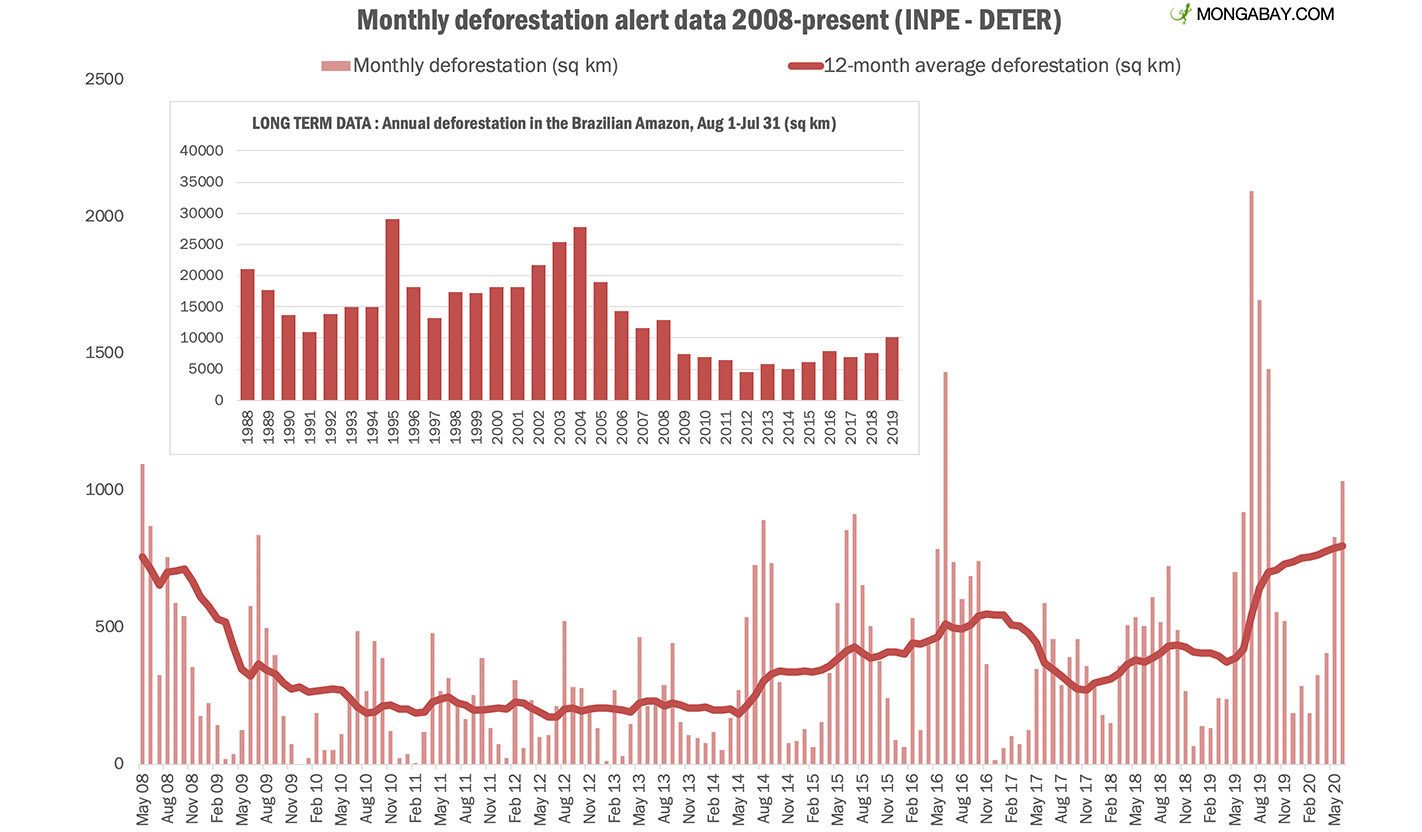
Deforestation rates across the world are at an all-time high. However, the story is sadder for the Amazons as the levels are highest in the last 15 years.
Amazon’s deforestation rates: Higher than ever before

A new report published by INPE, Brazil’s space research agency shows that deforestation rates grew by 22 percent. Home to over three million species of animals and plants, the region also houses over a million indigenous people. The Amazonia is also a vital carbon storehouse that aids in cooling down the effects of global warming.
As per the report, about 5,100 sq miles of forest was lost in the 2020-21 period. The amount is highest since 2006. “We have to be more forceful concerning these crimes,” stated Environment Minister Joaquim Leite. Minister Leite added that the data is a serious “challenge”. However, he stressed that the report “does not exactly reflect the situation in the last few months”. Moreover, deforestation rates have increased under President Jair Bolsonaro’s administration. President Bolsonaro has been encouraging mining and agricultural activities both in and around the rainforest. Additionally, he has clashed on matters related to deforestation with INPE, accusing the institute of spearing the nation’s reputation in 2019.
Will COP26 pledges make a difference?

Brazil is one of the countries that pledged for ending and reversing deforestation by 2030 during the UN Climate Summit in Glasgow. The nation also signed major deals to ensure this. The pledge, inclusive of $19.2 billion in public and private funds can help in restoring damaged land, supporting indigenous communities, and tackling wildfires in developing nations.
Moreover, international supply chains and deforestation in Amazonia have deep links. In 2020, a Greenpeace investigation discovered links between food sold in Britain’s supermarkets and mass deforestation in the Brazillian rainforest. According to the investigation reports, McDonald’s, Lidl, Asda, Nando’s, and Tesco were selling meat sourced by a UK supplier. However, the animals were fed soy, grown, and sourced from farms built in the deforested regions.






